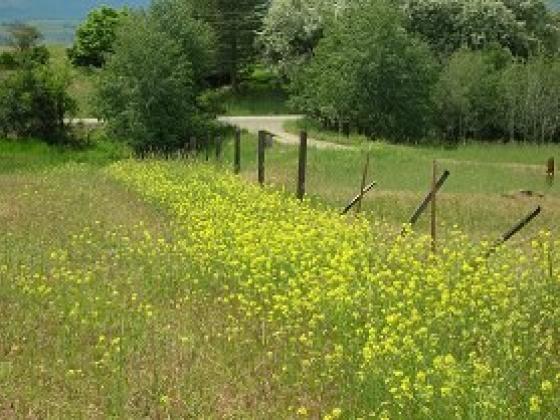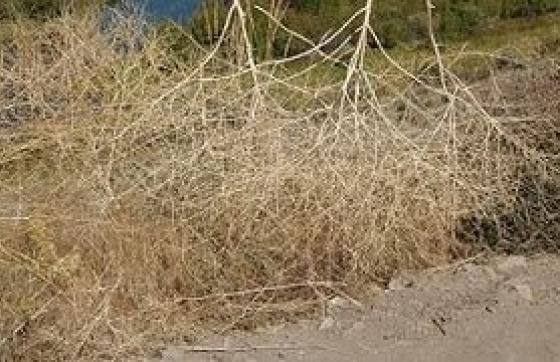
Scientific Name: Sisymbrium altissimum
Family: Brassicaceae (Mustard Family)
Other Common Names: Jim Hill Mustard, Tumbleweed Mustard, Tall Mustard
Life-Cycle: Annual that reproduces by seed but can cover large areas as a tumbleweed.
Weed Guide > Tumble Mustard

Scientific Name: Sisymbrium altissimum
Family: Brassicaceae (Mustard Family)
Other Common Names: Jim Hill Mustard, Tumbleweed Mustard, Tall Mustard
Life-Cycle: Annual that reproduces by seed but can cover large areas as a tumbleweed.
| Description | Bloom (varies by elevation) |
What to Do | When? | Invades Undisturbed Land | State Class |
|---|---|---|---|---|---|
| Starts as a basal rosette of deeply lobed leaves; grows tall on simple branching stems with upper leaves more linear; fruit 2-4” long and slender. | Small pale yellow 4-petaled flowers bloom progressively up stems in small clusters. Blooms in June; can bloom in fall. | Hand-pull or hoe seedlings and small patches in spring and late fall; repeated mowing controls large patches; do not burn. | May-June, before it blooms and goes to seed; bag and throw-out blooming or seed-pod plants before they become tumbleweeds. | Not typically. Found in disturbed open areas such as roadsides, building lots, rangeland and agricultural fields. | none |
• As an annual, tumble mustard starts as a basal rosette of deeply divided leaves then bolts upward on an erect stalk 1-3 ft tall. Many thin branches, with smaller, finer leaflets, spread widely from the main stem making the plant broader on top than at the bottom.
• Leaves and stems are fairly bright green in spring and early summer. Lower leaves are often much broader than upper leaves though both are pinnately compound. The lowest leaves (basal leaves) die around bloom time.
• Small flowers of four yellow petals bloom in small clusters (racemes), blooming sequentially upwards on a branch.
• When done blooming, plants turn brown and appear like leafless skeletons. Last year's stalks still standing or scattered on the ground look similar.
• Like many mustards, the seed pods are long (2-4") and thin and hang from lower branches while upper branches may still have small yellow flowers in bloom.
• Tumble mustard is widespread across the Methow, mostly in open, disturbed (or burned) sites such as roadside ditches, residential areas in the shrub-steppe, ranch and Ag land, and post-fire areas.
• It is an annual - each plant dies every year and new plants grow from seed - but it can be a biennial (takes two years to grow and then die) or a "winter annual," meaning it germinates in the fall and sprouts in the winter (often under snow) and as soon as ground is snow-free in the spring.
• It flowers in late spring and early summer, but the individual bloom time is short and flowers bloom sequentially up each branch so that a plant can bloom for weeks but often look like it only has a few flowers.
• It grows from a single taproot and spreads via seeds.
• Plants become brittle, break and roll like tumbleweeds, spreading seeds.
• Seeds are capable of retaining moisture and can survive many years before germinating.
See the whole “Toolbox of Weed Control Methods” for more details.
